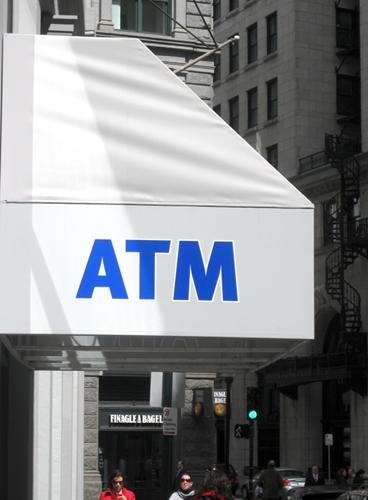The automated teller machine has become a cornerstone of consumer banking operations, allowing customers to withdraw money from their accounts long after their branch has closed for the day. The convenience offered by these kiosks has reshaped expectations regarding the availability of banking services. When these machines go offline or malfunction in any way, valued customers may be prevented from accessing their funds. These types of service disruptions are not only embarrassing for a financial institution, but could also adversely affect its long-term viability as a business.
Because ATMs are connected with every users' account information across the entire banking network, any equipment errors could have far-reaching consequences. For instance, when a kiosk in Delaware malfunctioned and spit out $1,800 to a local college student, it may have seemed like a once-in-a-lifetime stroke of luck. However, what that person did not know was that the dispensed money had been erroneously withdrawn from another member's account. The New York Daily News reported that the matter was eventually resolved, but only after the student returned the ill-gotten funds to his local branch.
Other equipment problems can cause even further frustration for bank customers. When two Colorado bank customers, including single mother Kaitlin Boyer, attempted to deposit cash into the same ATM last year, the kiosk failed to add the proper amounts to each account. According to NBC affiliate KOAA, the financial institution worked with the two individuals to alleviate the problem, but those customers had to get by on limited funds in the meantime.
"Eventually the bank was able to figure out what money belonged to whom, but because Boyer only had a rough idea of how much cash she was missing it took several days to get the problem resolved," the news outlet stated. "As a single mother and nursing student, those days without funds were more than inconvenient. … This problem isn't specific to one bank; an ATM at any bank could malfunction"
Considering the severity of the issue she encountered, Boyer was pretty understanding, telling the source that she would continue to be a customer at the bank regardless of the inconvenience caused by the incident. However, not all individuals will react in such a positive manner; many would opt to take their business to a competitor instead of giving the institution another chance.
The high cost of customer churn
Customer churn has long been a concern in the banking industry, but the issue has become more pressing in the aftermath of the most recent economic crisis. People have scrutinized their financial service providers more closely in recent years as more stories emerge chronicling poor or even fraudulent activities committed by banks. According to a report released by analytics firm Attensity, many organizations have exacerbated attrition issues by introducing a bevy of new charges including ATM fees. Together, these factors have created conditions within the financial services industry conducive for customers to jump ship at a moment's notice. The study reported that one major banking enterprise expected to see as many as 60 percent of its clientele pursue other financial services options within a 12-month span.
It's a well-known fact among business leaders that it costs more for organizations to bring in new customers than to simply retain existing clientele. Depending on the size of an operation, losses attributed to customer churn may vary. According to a Financial Publishing Services white paper, reducing attrition rates can increase a bank's net profits as much as 80 percent.
Keep equipment running optimally
With customers primed to see if the grass is truly greener, bank officials should take every recourse to ensure that they are providing the highest quality service possible. A key part of these efforts will be maintaining functional and reliable banking equipment, including ATMs. This equipment is extremely sensitive, so it's imperative that each individual component is running properly. In particular, a kiosk's data storage device should be durable and capable of handling large workloads for a number of years without needing to be replaced.
Panasonic's industrial-strength SD cards are the perfect solution to keeping critical banking equipment operating without experiencing any service disruptions. These devices offer a variety of advanced features to ensure they continue functioning as needed. Static wear leveling, for instance, reduces the wear-and-tear inflicted on any one data block, dispersing workloads across the entire device and maximizing its shelf life. In addition, Panasonic technicians have developed a unique algorithm to prevent sudden power failures from damaging the contents of these assets. This protection covers both data that is currently being written and information that has already been stored on the device. The cumulative result of these features is a durable, high-quality tool that will continue performing optimally for years to come.
When investing in such a critical component, financial organizational leaders should seek out the assistance of a trusted vendor. There are a number of form factors, compatibility issues and other factors that may affect the performance of an SD card. As a premiere distributor of Panasonic's industrial-grade SD cards, DIGISTOR has the know-how to help guide its customers to the right solution.


Recent Comments